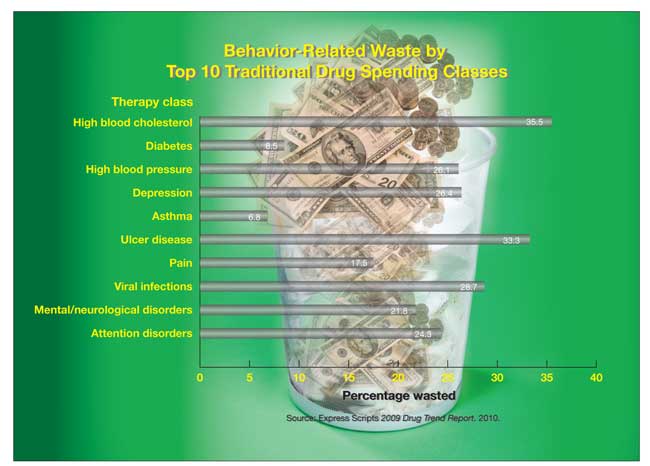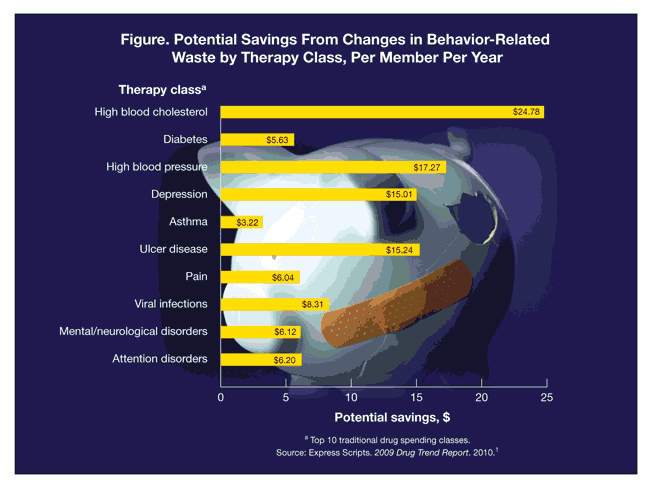Billions of Dollars Are Wasted From Poor Medication-Taking Behaviors
Common behaviors of patients taking prescription drugs, such as forgetfulness and procrastination, may result in wasteful spending of $163 billion annually, according to the recently released 2009 Drug Trend Report from Express Scripts.
Common behaviors of patients taking prescription drugs, such as forgetfulness and procrastination, may result in wasteful spending of $163 billion annually, according to the recently released 2009 Drug Trend Report from Express Scripts.1 This expense is related to 3 key factors: $106 billion from medical costs of nonadherence to therapy; $51 billion in missed opportunities related to lower-cost medication alternatives, both brand-name and generic; and $6 billion in missed opportunities related to lower-cost options for delivery of medications.

The report breaks down the behavior-related waste by therapy class. For example, more than one-third of the annual spend (35.5%) on cholesterol-lowering medication could be saved with better medication-taking behaviors (Figure, left). Changing behavior-related waste patterns in patients taking this therapy could result in savings of $24.78 per member per year (Figure, below).
“The good news is that these potential savings in the pharmacy benefit are tied to one of the few variables in health care we can readily influence: behavior,” said Steven Miller, MD, senior vice president and chief medical officer at Express Scripts. “This research shows that in terms of achieving lower costs and improved outcomes, health care reform starts in the home.”
Overall, the drug trend for the United States increased 6.4% in 2009, reversing a pattern of lower drug trend increases in previous years, the report says. Market forces drove the trend up by 8.3%, while behavior drove down the trend by nearly 2%.
Bob Nease, chief scientist at Express Scripts, said there is good reason to be optimistic that the behaviors causing this vast waste in health care can change.
Express Scripts’ application of behavi

oral science to health care has proved very successful in achieving behavior changes through programs that are fully voluntary, said Nease.
Other notable trends found in the 2009 Drug Trend Report include that diabetes is the top driver of total cost increases in the traditional drug sector because of growth in utilization and cost per prescription. Spending for drugs used to treat viral infections increased by approximately 25%, primarily because of the increased prevalence of the use of agents for influenza.
According to the report, $51 billion is wasted each year when more expensive brand-name treatments are chosen. Miller added, “If we optimized every individual’s behavior relating to prescription drugs, we could achieve savings that in 5 years would cover the projected costs of the recently passed national health care reform legislation.”
References:
Reference
1. Express Scripts. 2009 Drug Trend Report.http://www.express-scripts.com/research/studies/drugtrendreport. Published April 2010. Accessed April 22, 2010.